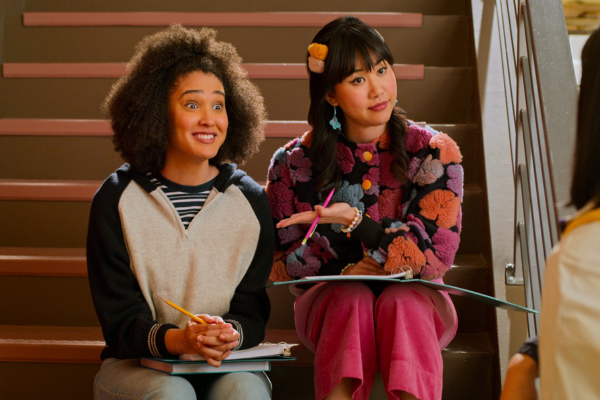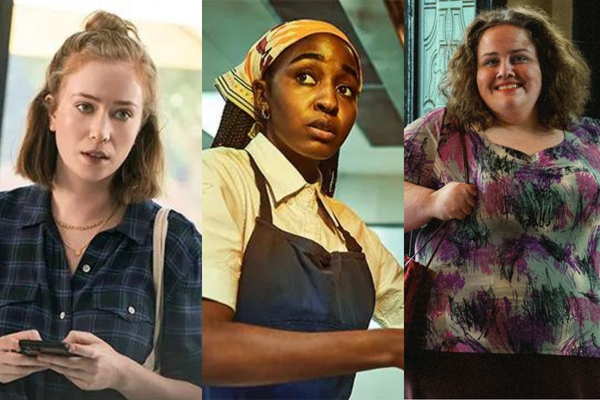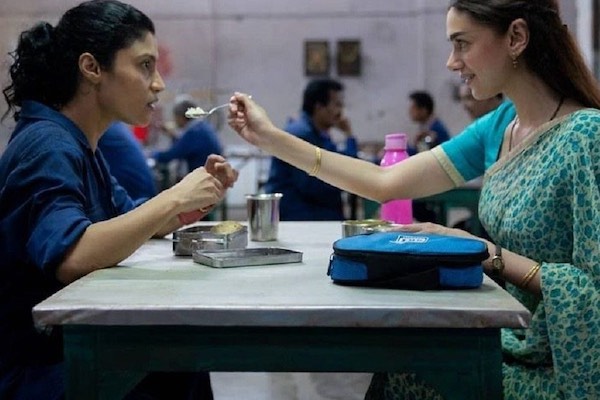
5 BIPOC Queer Animated Icons We’ve Fallen For
August 2, 2023
Bi Enough, By Myself
August 10, 2023Last year, I raged about the resurgence of the “Bury Your Gays” trope. This year, a different representation issue has evoked my frustration: networks or shows introduce queer women but don’t actually commit to that representation. It’s as if television is a married man, and sapphics are his side chicks—occasionally dazzled with attention and promises, but forever shadowed by his real partner, heterosexuals (or, in a few cases, gay men).
This “side gays” treatment manifests as limited promotion and swift cancellations of sapphic-centric shows, compared to shows that feature straight or gay leads; and as sapphic love stories/characters appearing less often or less meaningfully in hetero-centric shows than straight or gay male romances/characters.
Examples of the former include Netflix giving gay-centric show Heartstopper more promotion than the sapphic show First Kill, then giving Heartstopper a prompt two-season renewal, but canceling First Kill, despite First Kill’s superior initial-stage viewership. Likewise, Prime Video has long hyped its coming gay romance Red, White & Royal Blue, but did little lead-up promotion for the sapphic A League of Their Own, and is only bringing League back for four more episodes.
Regarding sapphic underrepresentation in hetero-centric shows, consider that among some of the most renowned shows of the 2010s—e.g., Game of Thrones, Modern Family, Shameless, The Office, The Walking Dead, and the infinite Law & Order franchise—you’ll likely find more gay men than lesbians, or you’ll find that if a given show has both gays and lesbians, gay men debuted first and/or fared better. Today, more hetero shows have sapphic characters, but their stories are often marginal.
For example, on Netflix’s Never Have I Ever, one of the protagonist’s best friends gets a hetero love story that unfolds through two seasons (about 17 episodes), while the other best friend cycles through two sapphic relationships that end with a whimper, and her final partner is in just four episodes. The recent season of Apple’s Ted Lasso, includes a season-long hetero love story and a multi-episode gay coming out/romance, both with happy endings; But a female character’s sapphic relationship ends just three episodes after it starts, with an out-of-character fight and meek off-screen break-up—and before long, she reunites with her ex-boyfriend. Similarly, Netflix’s Shadow and Bone features multiple hetero love stories and a gay romance, all explicit, but relegates a sapphic romance to just body language subtext. Meanwhile, the Bridgerton franchise has had some representation of gay men, but zero overt lesbians, and it seems unlikely the franchise will make any queer romance its central plot.
My theory about television’s sapphic sidelining: executives prioritize women as the target gender demographic, and assume straight women find gay men more palatable than lesbians. Indeed, according to one scholarly report, “people are more negative toward homosexuals of their own sex than…the opposite sex.”
However, I can’t otherwise substantiate my hunch, and perhaps instead, gays have just been in the cultural consciousness for longer. After all, as clinical psychologist Jenny O’Brien says, society is in a period of normalizing queerness in women—that maybe 10 years ago, “when people thought of gay people, they would think of a gay man,” but people now realize that understanding is too narrow. O’Brien also suggests the length of time a group has been visible in media contributes to how many of those people are in positions of power to further that visibility. And gay men do have a head start with television, as they appeared in shows more than a decade before the first lesbian, and the first TV show same-sex wedding (in 1991) was between two men. So, maybe sapphics are just still catching up.
Of course, no LGBTQ+ identity remotely has sufficient representation yet, and we must demand more (and better) visibility for identities across the spectrum. Nevertheless, currently, I can’t help focusing on the minimization of lesbians and sapphic romances in particular. Television, you can’t introduce that representation into shows for inclusivity points, but not give these women/romances real significance. Sapphics are not your side gays, and we deserve a real commitment—now, and forever.





